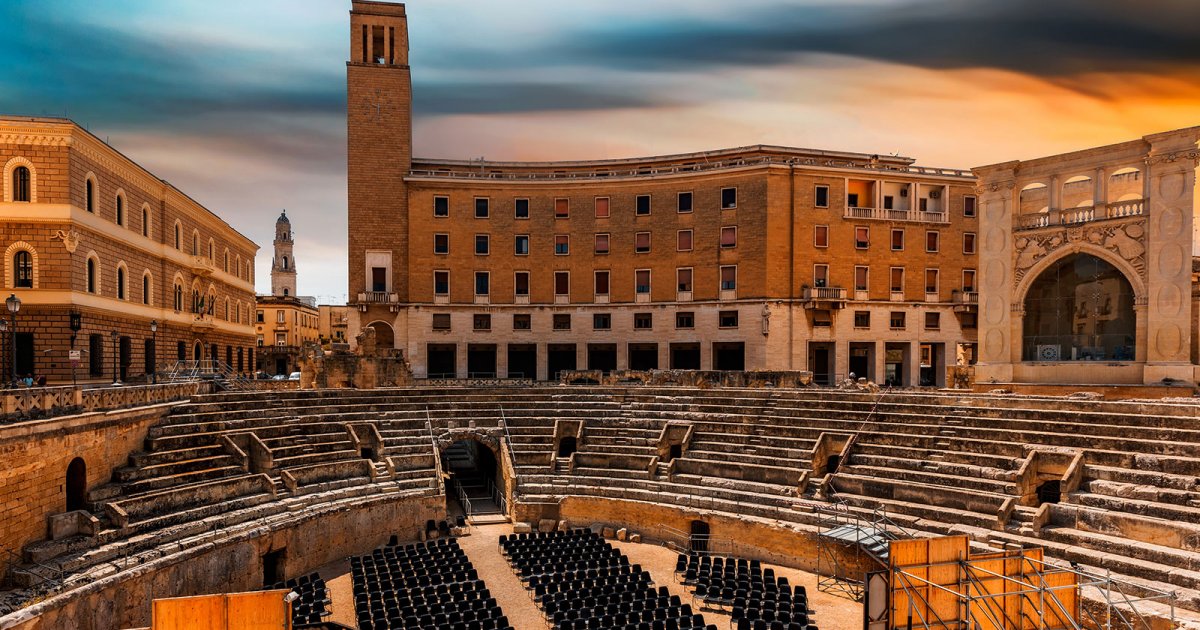PIAZZA SANT'ORONZO, Second Part
 Language: English / USA
Language: English / USA
To the left of the Sedile, a part of the square was excavated in 1938 to bring to light part of the Roman Amphitheater, built between the 1st and 2nd century AD and discovered quite by chance in 1901 in an area that was built up towards the end of the 16th century.
The amphitheater measured 102 meters by 83, and could hold around 20,000 spectators. It was originally built on several levels, like the Colosseum, and was a magnificent edifice. The arena was eight meters below the present-day ground level; the central area covered in sand used mainly for gladiatorial combat and hunting displays.
Partly carved directly out of the tufa stone and partly built on robust arches, the amphitheater has been almost entirely lost, and the part still visible is the result of restoration. The openings in the tiers of seats, known as “vomitoria”, allowed spectators to enter the amphitheater from the passageways below the seating.
Opposite the amphitheater, you can see the splendid, orderly facade of the Church of Santa Maria delle Grazie, built around 1590 by Michele Coluzio. Unlike the other churches in Lecce, this one does not feature the typical decorative sculptural elements; it is an example of an architectural style that was foreign to local tastes, representing an attempt by the Church of Rome to impose its cultural models in Apulia.
Finally, on the facade of the Bank of Naples, you can check the time on the fabulous Orologio delle Meraviglie, a bronze clock crafted in 1955 by Francesco Barbieri, almost 10 meters tall and believed to be the largest in the world.
An interesting fact: the locals have always tried to avoid stepping on the Mosaic of the She-Wolf, which you can see in the center of the square, created in 1953 by Giuseppe Nicolardi. Over the years, however, the work fell into disrepair, and tourists had acquired the nasty habit of taking pieces of it as a souvenir.
The mosaic was finally restored in the summer of 2017, and the artist, 91 years old by that time and visibly moved, told the story of how he had originally chosen the pebbles for the work and worked with them one by one, after sourcing them from quarries north of the city or from the cliffs overlooking the sea.
Our visit to Piazza Sant’Oronzo ends here. MyWoWo would like to thank you - see you again at another Wonder of the World!



